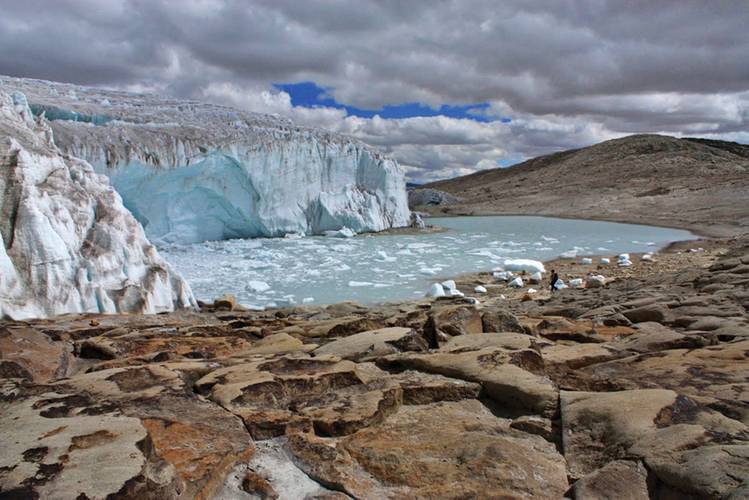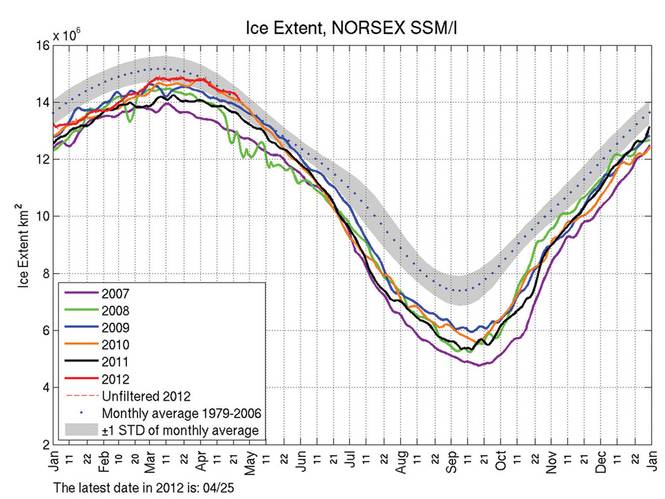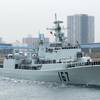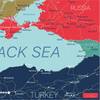CO2 & the Environment: A “Not Guilty” Verdict?
Governments of the world continue to encroach with increasingly stringent emission legislation – of the in no way scientifically proven debate – creating a situation that puts vessel owners and operators of engine driven transport equipments of all kinds under growing legal and financial burden. But, what role does soot and CO2 really play for the environment and the global warming? Maritime Reporter & Engineering News German-based contributing editor Dipl.-Ing. Peter Pospiech takes a closer look to this question and delivers some interesting analysis.
CO2 - The unwanted “friendly” Natural Gas
Reduction of the so called “greenhouse” gas CO2 is one of the key goals which the global maritime industry has set itself – but only for economic reasons, and not for reasons of global earth-warming, as the classification society Germanischer Lloyd explains:
International shipping contributes only 2.7 % to global CO2 emissions, according to figures of the International Maritime Organization (IMO), but the awareness of the international shipping, shipbuilding and marine equipment industries of environmental and climate change issues has increased greatly in recent years. According to an IMO Greenhouse Gas survey conducted in 2007 with updates in 2008 and 2009, CO2 emissions from shipping in a “business as usual” scenario will increase from the current level of 1.12 billion tons to 1.475 billion tons in 2020.
In July 2011, IMO adopted binding regulations for effective action against the expected CO2 increase, significantly reducing fuel consumption of ships and hence CO2 emissions. These are based on the EEDI and SEEMP. The EEDI is the Energy Efficiency Design Index, which assesses the transport efficiency of a ship and applies to newbuildings in excess of 400 GT, ordered from January 1, 2013, onwards or to be delivered on or after July 1, 2015; it is measured in grams of CO2 per ton and nautical mile. The maximum CO2 limits, which vary by ship type, will be reduced at three five-year intervals from 2015 onwards. The SEEMP is the Ships Energy Efficiency Management Plan, which regulates ship operation. It is likewise applicable from January 1, 2013, for all ships currently operating in the world merchant fleet.
An IMO study published in October last year on the long-term impact of the two new regulations on development of CO2 emissions of the world merchant fleet shows very positive assessments, analyzing the various scenarios for economic growth and fuel price development. Compared with the business-as-usual scenario, the average annual savings of CO2 emissions resulting from EEDI and SEEMP are as much as 15 million tons in 2020, or a 14% reduction. In 2030 savings will be 330 million tons, that is an average reduction of 23% per annum, and in 2050 as much as 1,013 million tons – a result of the reductions in fuel consumption induced by the two efficiency indices.
At the same time there will be significant savings in fuel costs for the shipping industry. For example, a VLCC (Very Large Crude Carrier) with deadweight tonnage of more than 200,000, which currently consumes 23,000 tons of heavy fuel oil, will only require 14,000 tons in 2030 if built in accordance with the EEDI requirements. For 2020, the experts expect annual fuel cost savings of about $50 billion, and in 2030 savings should be $200 billion.
Soot Particles: Urging the Climate Change
The question regarding the climate and all of the actions mandated to stave off climate change comes down to what is natural, and what is influenced by man. Over thousands of years, warm and cold periods have alternated; Ice comes, ice goes; the north-west passage is sometimes open, sometimes frozen; and Greenland is sometimes green land, and sometimes iced. Analyzing a shorter timeline is ultimately an analysis of weather, not climate, and therein lies part of the problem. Many policymakers do not understand the difference, and are willing to watch short-term events as fundamental changes and react respectively.
It can be agreed, though, that if the world climate is broken, all must employ every means to repair it.
The tools shall be delivered by Geo-Engineering – or the new Climate Engineering – with the mandate “Let’s hack the planet” as if the earth system is a numeric puzzle or a simple machine. Even short-term weather forecasts can be given with moderate presumption, and although until today nobody is able to understand the complexity of the interaction of all of the climates relevant factors or to describe how they fluctuate and influence one another, growth marches forward in Geo-Engineering, the new scientific field which is ready to intervene with global experiments into the Earth’s atmosphere.
The risks are unpredictable, resulting in criticism and resistance movements worldwide. Gerhard Schulze, a professor of sociology at the university Bamberg, Germany, said, ”Some participants in the climate discussions look at the earth as being in need of repair, which can be put in order by Geo-Engineering: taken leave of climate plumbers senses, who simulate volcanic eruptions and would like to catapult particles into the atmosphere to reduce the temperature.”
In addition, the Intergovernmental Panel on Climate Change (IPCC) is in a very difficult position of manipulation and confidence, as the global temperature stagnates for about the past 10 years.
Although the advent of constant CO2 increase and also the warming of the earth, it is unproven up to what extent the moderate secular earth warming of the 20th century of about 0.7 degree Celsius has been caused by anthropogenic CO2.
Thus, doubts grow also, because of the stagnation of the earth warming since 1998, whereby the atmospheric CO2-content increased even further. Increasingly other parameters have come into the discussion.
According to the German Maritime Institute (DMI), “The dominating role at the long lasting climate change is taken over by the solar influence. The anthropogenic greenhouse/CO2-influence on the long-lasting climate evolution will be afar overestimated. Its contribution is able to explain 20% of the long-lasting temperature behavior. The anthropogenic green-house effect physically cannot explain thereby the cooling-off periods.” Recently it became clear that ”Soot particle increase considerably the climate warming. The soot particles are responsible for almost the half of the ugly ice melt in the Arctic zone.”
This is not a new perception, because Arctic, and by some estimates soot is responsible for up to half of the ice melt.
Physically it can be explained in this way: snow and ice (and consequently the glaciers) have a high reflectivity for solar radiation. If the surfaces is soiled (e.g. by soot and dust), the portion of the reflected radiation is decreased. More radiation will be absorbed and changed into warmth.
Examples to prove the opposite: in cases where the air pollution is smaller, the glaciers grow in spite of global warming. In New Zealand, for example, glacier growth continues, helping to prove that there is no “global” behavior of the glaciers. For meteorological reasons, it is absurd to make a climate warming of 0.7 degrees C as a single cause responsible for the Arctic- and glaciers-melt.
There must be other reasons for melting glacier and polar regions, which are situated on high ground and susceptible to air pollution and natural changes of the solar radiation.
For the ablating of the alpine glaciers the glaciologists from Austria said: “At the beginning of the millennium, the alpine glaciers have been similar small as they are today, eventually smaller as today.” The same opinion is given by Jörg Negendank, Professor at the GFZ (Deutsches GeoForschungsZentrum … the German GeoResearch Center) in Potsdam, Germany.
“At least in the alpine region there must have existed a much warmer climate during the Roman period, because the big Aletsch glacier was very much smaller than today.”
Consequently, sustainable human contamination in the atmosphere like CO2 and soot are not necessarily solely responsible for bringing about the changes.
By some calculations, the effects of CO2 in the climate warming equation is a marginal note: “The so called climate sensitivity of the CO2, thus the increase of the average global temperature in consequence of doubling the CO2 concentration, amounts to about 1°C. This doubling can be equated with the burning of all the still existing fossil fuels – therefore is the value of 1°C uncritical and gives no reason for disaster warnings.”
The spectacular announcement of the IPCC of 3 to 5 °C and more are obtained by positive feedback mechanism in the computer scenarios. These are highly contentious and by nothing proved. ”Under consideration of all these facts we should therefore concentrate with all our measures more on environmental protection, than develop multi-billion dollar methods to avoid CO2.”
In additon to this says the director of the Meteorological Institute of the University Berlin: “It’s about time to place the environmental protection into the worldwide focus of any action. Clean air, clean water, an intact ecosystem are the benefit for all human beings today and in the future. How ideologically presumptuous must someone be to specify a ”2-degree target” for the nature?”
In this regard it is very interesting to note that the Arctic melting since 2007 has not increased, but instead, in the years 2008 – 2010, more ice could be realized. Here it is quite amazing, in fact, when in earlier years a few experts always theorize about an irreversible ”tipping point” of the Arctic melt. Recently there are indications that such speculations about all kinds of man-made climate tipping points come to where they belong to: into the waste basket of the science.
(As published in the September 2012 edition of Maritime Reporter - www.marinelink.com)















